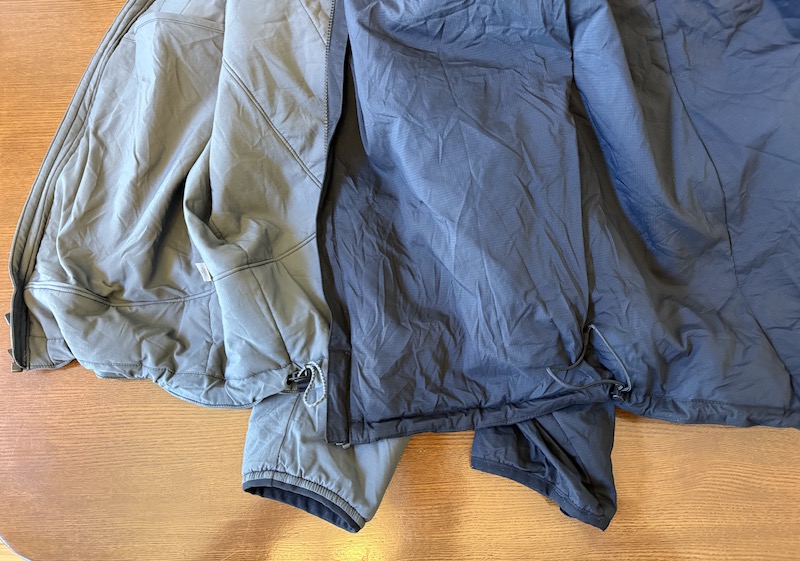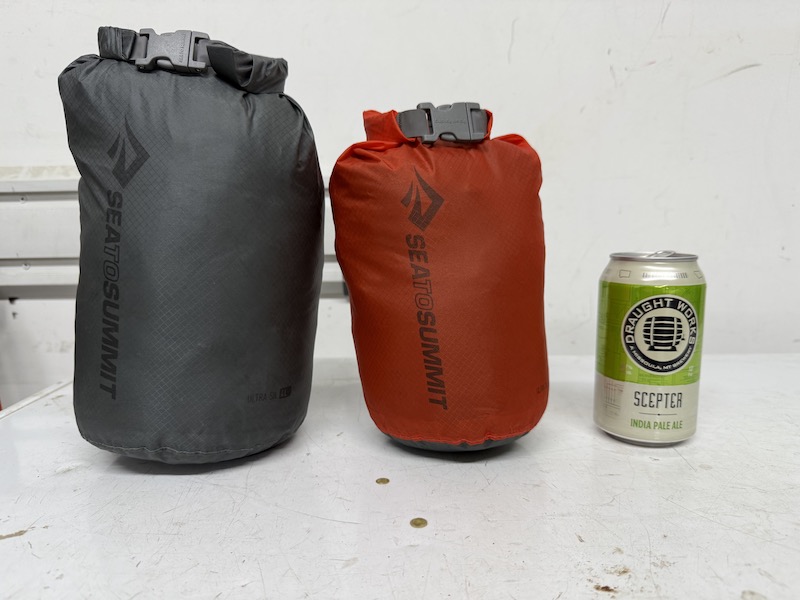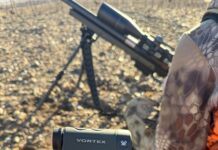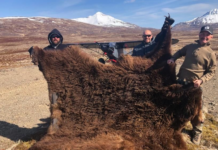
This Spring, I received both a Kuiu Kenai hooded jacket and an Outdoor Vitals hooded jacket from Rokslide, courtesy of Kuiu and Outdoor Vitals. Ryan Averry thought it would be interesting to do a comparison as the jackets share many similarities.
Kuiu Kenai vs Outdoor Vitals Vario Hooded Jacket Review
Before we dive in, the two jackets:
Kuiu Kenai link
Outdoor Vitals Vario link
What Kuiu Says
“Layering up or down between high- and low-level activity is a chore. The Kenai Hooded Jacket mitigates this ritual by regulating your core temperature with body-mapped DWR 3DeFX+ active insulation and breathable Stunner Stretch fabric.”
What Outdoor Vitals Says
“Vario: from the root of the word ‘variability’. Named for its adaptability, this jacket revolutionizes ultralight backpacking without compromising warmth or comfort. It has everything you know & love about the Ventus Active Hoodie, but also has pockets, a full zipper, & more insulation.”
Pricing and Colors
The Kenai retails for $259; the Vario for $210. The Kenai comes in three solids and three camo patterns; the Vario comes in three solids. The Vario solid colors are more geared for general backpacking, less so for hunting.
Toray 3DeFX Insulation
Both these jackets utilize Toray 3DeFX insulation. It’s a very interesting synthetic insulation–one that I’m pretty impressed with. If you look back at an older review I did on the Outdoor Vitals Ventus, you’ll see it also uses this insulation. Being synthetic, it resists moisture better than down, albeit with a little more weight and a little more volume. Among synthetic insulations, 3DeFX has an excellent weight-to-warmth ratio. I discovered that while reviewing the Ventus, I further reinforced it with both the Kenai and Vario.
So, both jackets utilize 3DeFX insulation and are hooded. While there are a few other similarities, there are more differences.
Let’s Talk Differences
The major difference is in the amount of insulation. The Kenai uses 90 g/m² in the torso and 60 g/m² in the rest of the jacket (including the hood). The Vario uses 40 g/m² throughout the jacket. The Kenai, no surprise, is quite a bit warmer than the Ventus, but also weighs more (and takes up more volume). This obviously has huge implications for how and when you would choose one jacket over the other. Before I get into a discussion on what I feel the best niches are for each, let’s first further compare the two jackets.
Both jackets have hoods; if you’ve read many of my reviews, I’m a huge fan of hoods and 90+% of my garments I use have hoods, from base layers to puffies. As pointed out above, the Kenai hood has more insulation (60 g vs 40 g), but the Kenai also offers a very nice rear adjustment. The Vario has no adjustment. The Vario hood fits pretty well, but personally, I’ll take the minimal weight hit of having an adjustable hood.
Similarities
Both jackets are full zip, again one of my pet peeve preferences—I find getting on/off most pullovers is a pain. The Kenai uses a slightly larger zipper, but both have performed flawlessly.
Both jackets have elastic cuffs; both work well. The Vario has a thumb loop, which I find handy if you’re going to layer a jacket over it.
Both jackets have adjustable waists, which is another pet peeve preference of mine—an adjustable waist is great for making minor adjustments in regulating your heat (or lack thereof). Both worked well.

Pit Zips vs Perforations
The Kenai has pit zips; the Vario does not, but does offer perforated vents under the arms. I found the pit zips to perform better than the perforations at dumping heat.

Pockets
Both jackets offer roomy hand pockets; the Kenai, in addition, provides a zippered chest pocket. The Kenai also offers two roomy interior pockets. I really like having these pockets in colder weather—I can stuff mittens/gloves/hats in them, as well as a water bottle to keep it from freezing.

The Tale of the Tape
Both jackets are size Large, and both fit me perfectly! For reference, I’m 5’11”,185 lbs. Both are cut slightly athletic, but not tight. For a jacket that could see mid-layer use, you don’t want a loose-fitting garment. I should note that both jackets are offered in Men’s Small-3XL; the Vario is also offered in a tall version, which adds 2” to the sleeve and 2” to the torso. Mine is a regular. Both jackets have a very generous back measurement of 30”; again, something I’m always nitpicking about.
Weight Comparison
Kuiu states the weight for Kenai as 15.8 oz for the Large. On my scale, the jacket weighs 16 oz. Outdoor Vitals states the weight for the Vario for a medium is 9 oz; my Large weighs 10.1 oz.
Volume Comparison
I can get the Kenai in a 4-liter dry sack; the Vario in a 2-liter dry sack.

Fabrics
Both jackets utilize nylon for the inner and outer fabrics; the Kenai lists their nylon as 51 g/m² Stunner Stretch, which is a 30d fabric. The Vario is 20d. Both fabrics are soft to the touch and pretty quiet; not quite as quiet as fuzzy fleece, but still quiet. Both fabrics are decently breathable, and both utilize a DWR on the outer fabric. While both jackets offer some wind protection, in cold conditions with heavier winds, a person will want some kind of wind layer. I got to use both jackets in light rain and snow, and both did an excellent job of beading up the moisture without wetting out the fabric. This is light precipitation; in heavier precipitation, I would expect complete wetting out—these are a long way from a rain jacket.
My Use

I received both jackets in late spring. I would have liked to have received them a couple of months earlier with colder weather, but I did get to use both jackets, racking up a lot of miles and several overnight trips. The coldest temperatures I encountered were in the upper teens. Several days I encountered light rain and snow.

Discussion
I would classify both these jackets as insulating layers first and as active insulation layers second. They are both warm enough that it takes pretty cold weather for either to be used a lot on the move.
Not surprisingly, the Kenai is a warmer jacket, which it should be, using roughly double the insulation. Not surprisingly, the Vario is lighter and has less volume, which it should since it uses roughly half the insulation. While comparing the insulation between these two jackets, I decided it would be interesting to do a little research on some additional jackets folks use (and a couple I’ve reviewed in the past).
Jackets and the Weight of Insulation
| Jacket | Insulation | Overall Weight |
| Outdoor Vitals Ventus * | 25 g/m² 3DeFX | 7 oz |
| Outdoor Vitals Vario * | 40 g/m² 3DeFX | 9 oz |
| Stone Glacier Cirque Lite * | 60 g/m² Primaloft | 15 oz |
| Arcteryx Atom LT | 60 g/m² Coreloft | 13 oz |
| Kuiu Kenai * | 90/60 g/m² 3DeFX | 16 oz |
| Stone Glacier Cirque | 133 g/m² PrimaLoft | 20 oz |
* jackets I’ve reviewed
As you can see, the insulation weight runs the gamut from 25 g/m² up to 133 g/m²; each has its place depending on the expected weather (and how much high output is expected). I should also note that everyone has a little different internal “thermometer”, some folks run hot, some cold, and some in between.
Temperature Comfort Comparison
With the above in mind, I found the Kenai to be suitable as a static (not moving) insulating layer to approximately 20°—over a light base layer and under a light windshirt. The Vario to approximately 30°, again over a light base layer and under a windshirt.
This suggests that both jackets could be used for more static purposes in earlier seasons. While a down jacket of similar warmth would be lighter and more compact, these jackets utilizing synthetic insulation would hold up better in wetter conditions.
Also, a down jacket is typically a poor choice as a moving layer. As I stated earlier, both these jackets are warm enough that it has to be cold to use them in this scenario. I can see using either of these jackets for late season (cold!) on the move.
Breathability
Neither of these jackets breathes as well as some of the Primaloft Evolve and Polartec Alpha Direct jackets I’ve reviewed in the past, but then again, none of those jackets shine overly well as static insulation. Also, a lot of hunting involves moving slowly through the woods, where breathability is much less of an issue versus a lot of climbing in steep stuff.
Which Jacket to Choose?
Both jackets are very well constructed and use high-end materials. The Kenai is warmer and more feature-rich; the Vario lighter and more compact. Early season as an insulating layer, I’d choose by how much time I’d be spending static and how cold it’s expected to be. Late season, very cold—choose the Kenai; just cold—the Vario.
Comment or ask Mike questions here.

















